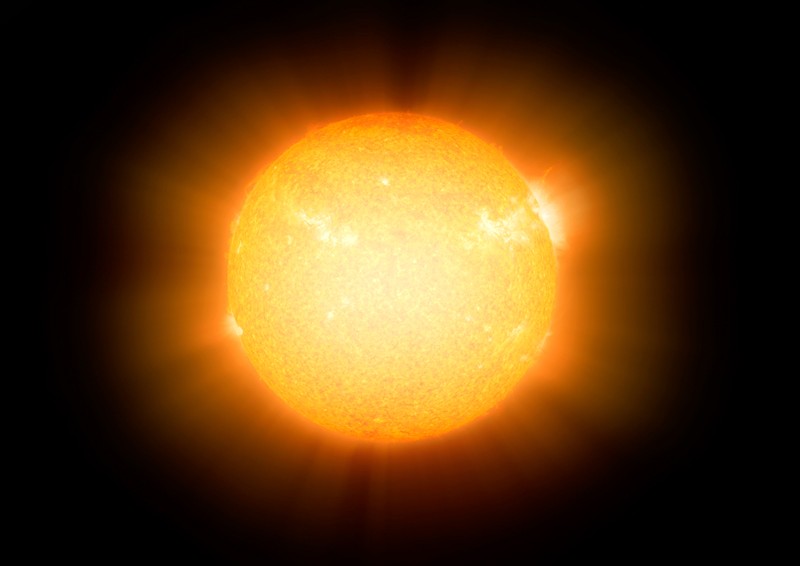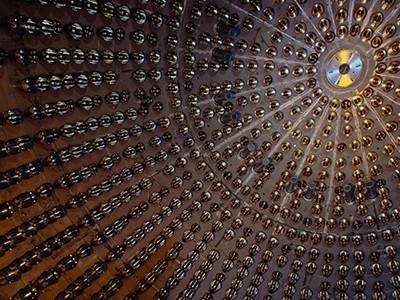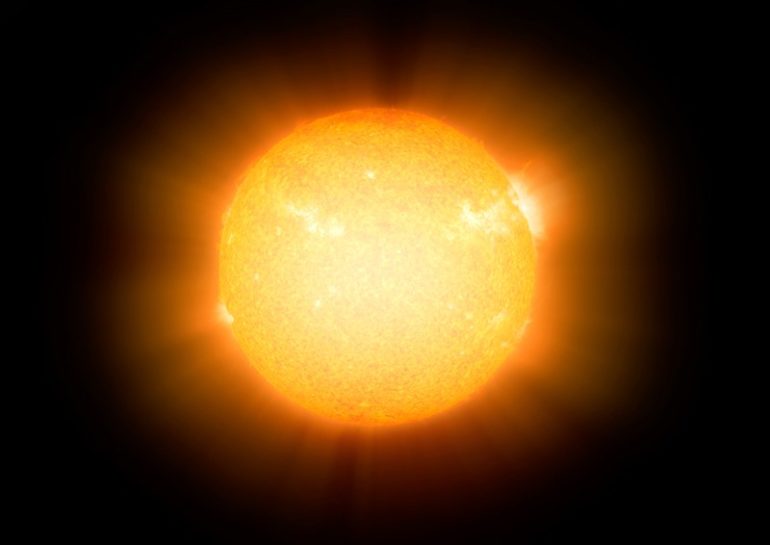
Neutrinos are released during nuclear fusion reactions in the Sun’s core. Detlev Van Ravenswaay/Science Photo Library
By catching neutrinos emanating from the Sun’s core, physicists have filled in the last missing detail of how nuclear fusion powers the star.
The detection confirms decades-old theoretical predictions that some of the Sun’s energy is made by a chain of reactions involving carbon and nitrogen nuclei. This process fuses four protons to form a helium nucleus, which releases two neutrinos — the lightest known elementary particles of matter — as well as other subatomic particles and copious amounts of energy. This carbon–nitrogen (CN) reaction is not the Sun’s only fusion pathway: it produces less than 1% of the Sun’s energy. But it is thought to be the dominant energy source in larger stars. The results mark the first direct detection of neutrinos from this process.
“It’s intellectually beautiful to actually confirm one of the fundamental predictions of stellar structure theory,” says Marc Pinsonneault, an astrophysicist at Ohio State University in Columbus.

The findings, which have not yet been peer reviewed, were reported on 23 June by the Borexino underground experiment in central Italy, at the virtual Neutrino 2020 conference.
The facility was the first to directly detect neutrinos from three distinct steps of a separate reaction, called the proton-proton chain, which accounts for most of the Sun’s fusion1–3. “With this outcome, Borexino has completely unravelled the two processes powering the Sun,” said Borexino co-spokesperson Gioacchino Ranucci, a physicist at the University of…


